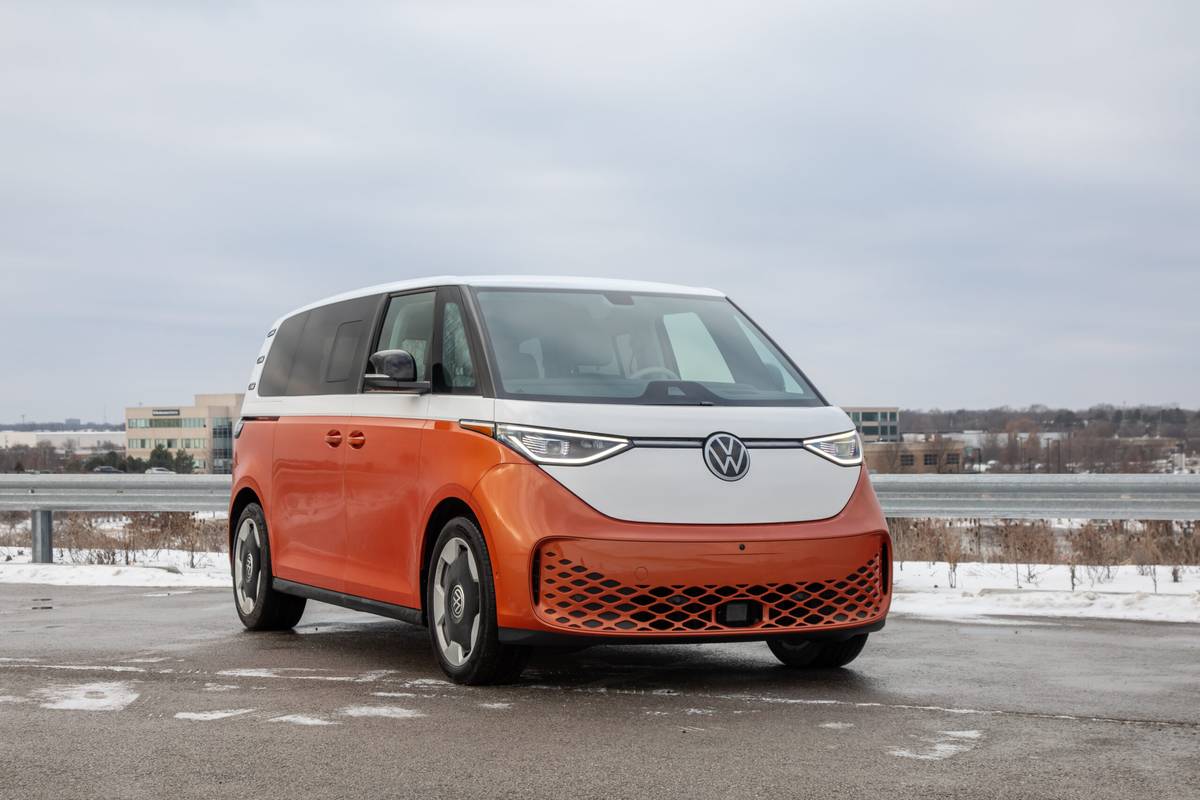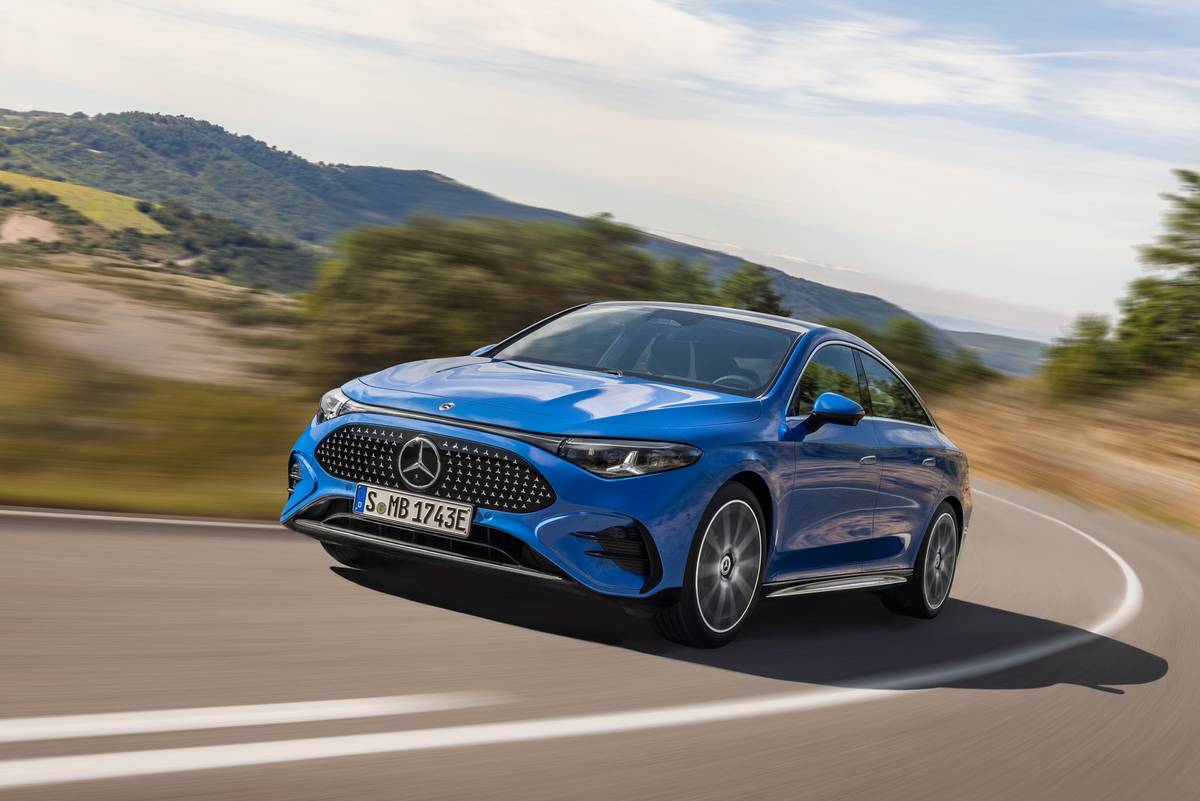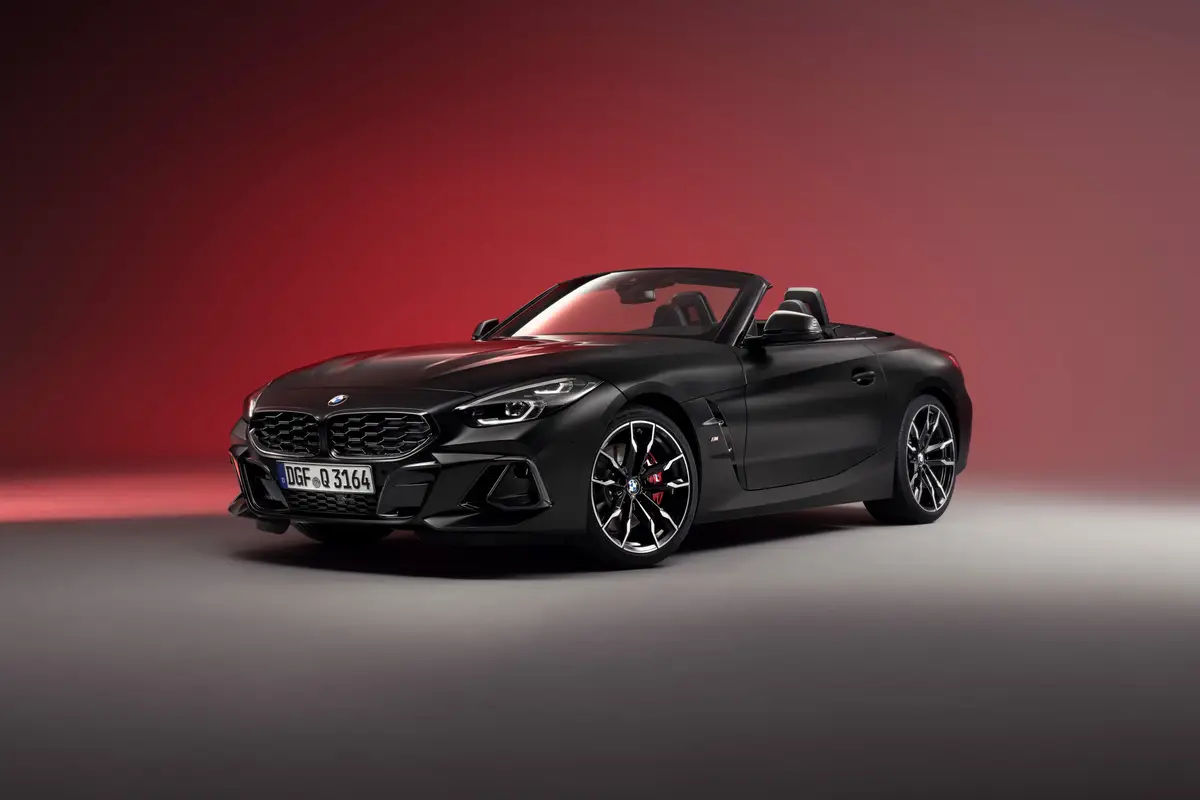2025 Toyota Prius Review: Big on Mileage, Small on Space

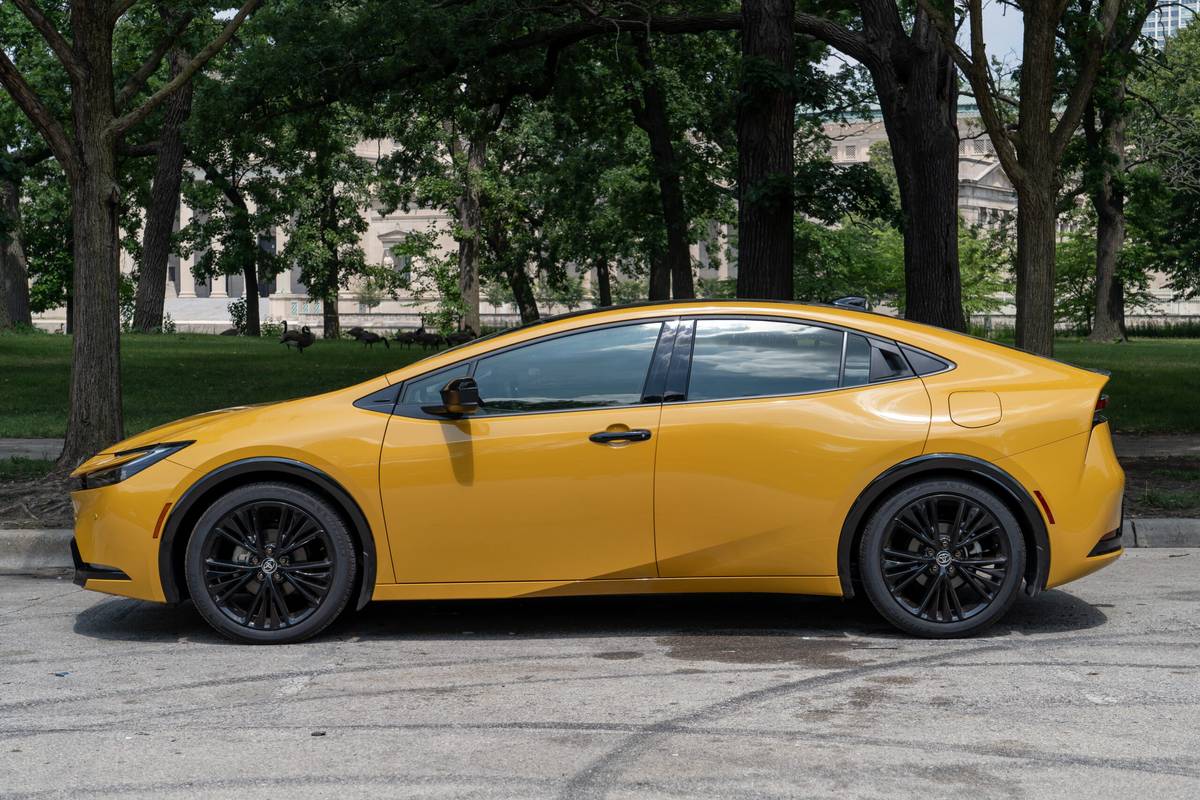
Is the 2025 Toyota Prius a Good Car?
- Sometimes! While demand for electric vehicles fluctuates, hybrids are having a moment, and one of the best when it comes to meeting its fuel-economy mission is the Toyota Prius. But while the Prius excels at being a hybrid — and a value-minded one at that — it’s a little odd; be ready to make some comfort and ergonomic sacrifices.
What Does the 2025 Toyota Prius Compete With?
- As a hybrid hatchback, the Prius doesn’t have many direct competitors. It goes up against nonhatch hybrids such as the Honda Accord Hybrid sedan, as well as compact SUV hybrids such as the Hyundai Tucson Hybrid and Toyota’s own RAV4 Hybrid; see the models compared.
The Prius was redesigned from the ground up for the 2023 model year, with new styling that was much more radical-looking than the previous model’s chunky, wedgelike silhouette. For 2025, Toyota added a Nightshade version that makes the Prius look even more dramatic, with blacked-out trim, black 19-inch wheels and an exclusive, eye-popping mustard-colored exterior paint called Karashi.
Related: What Are the Best 2025 Hybrids for the Money?
What Fuel Economy Does the 2025 Toyota Prius Get?
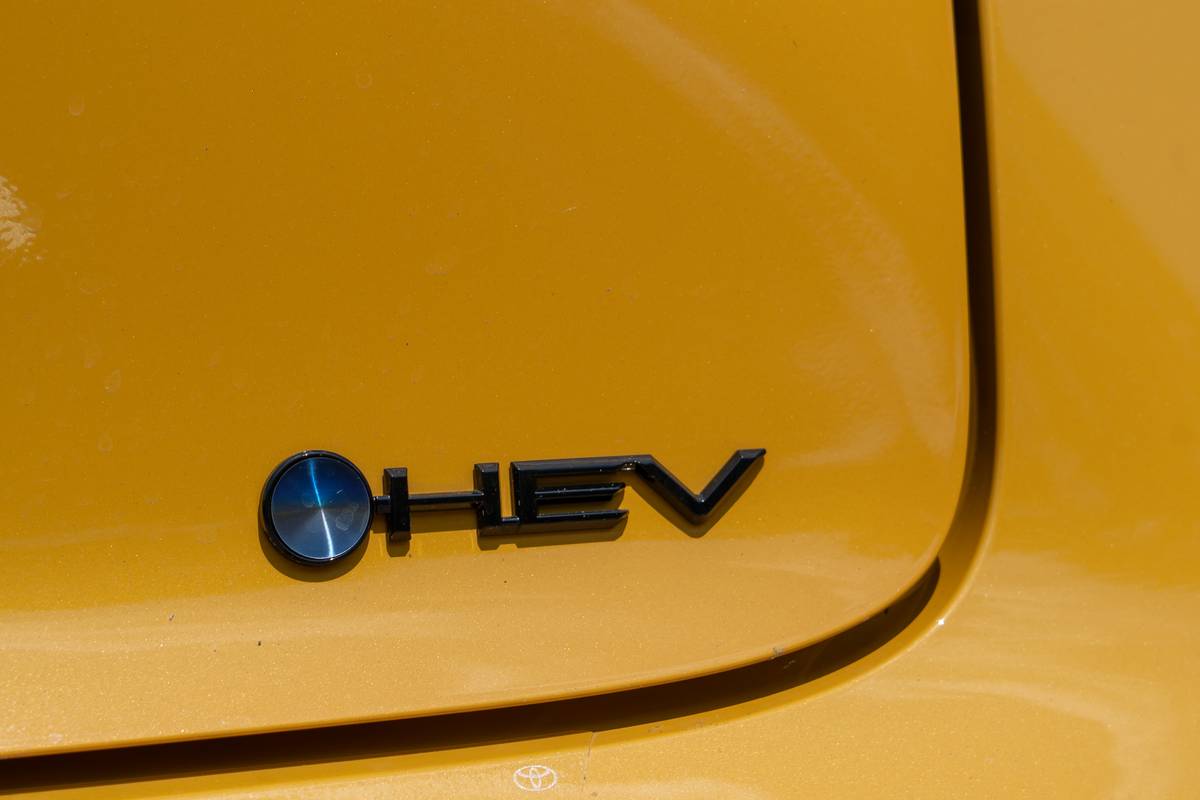
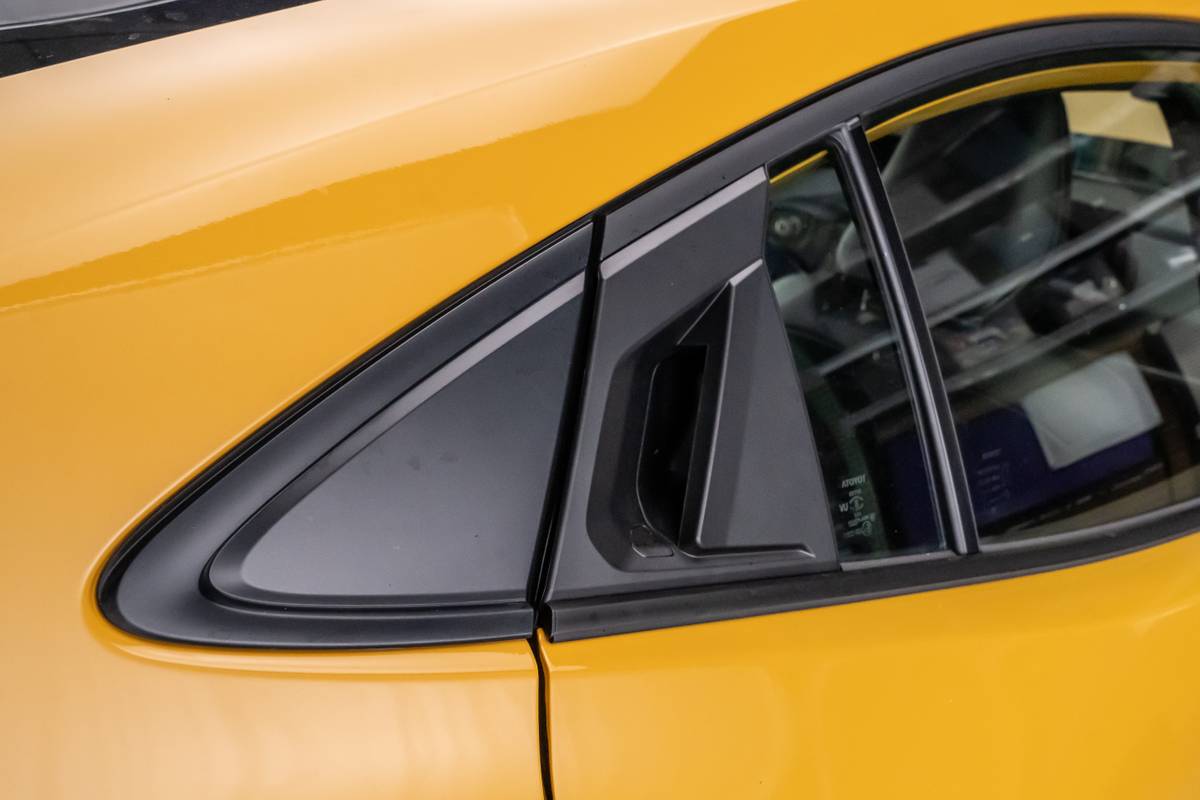
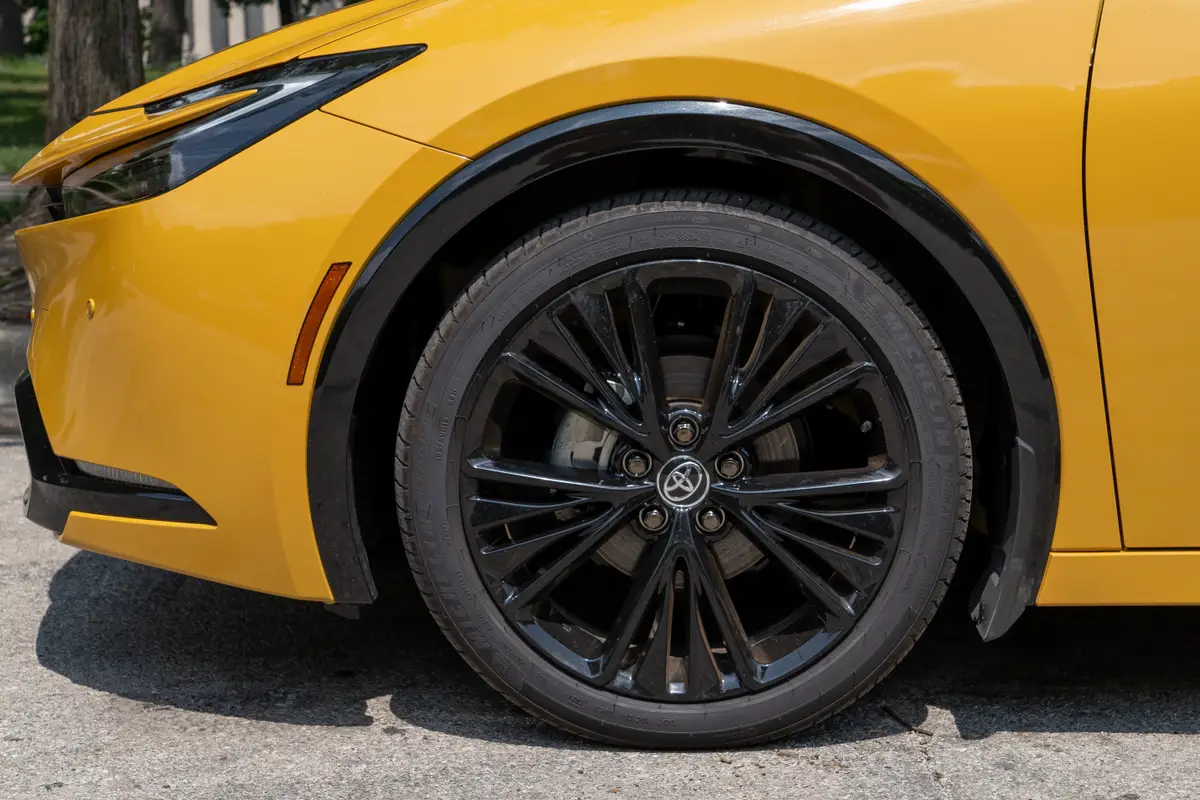
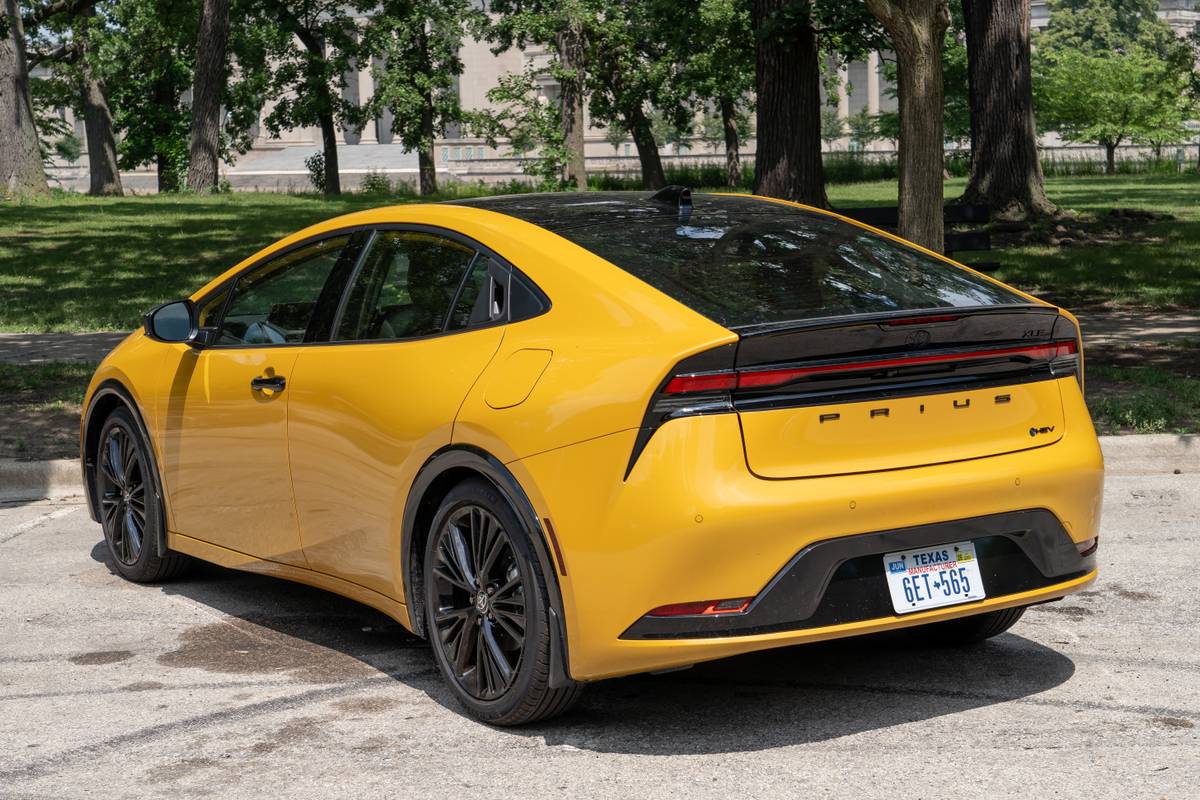

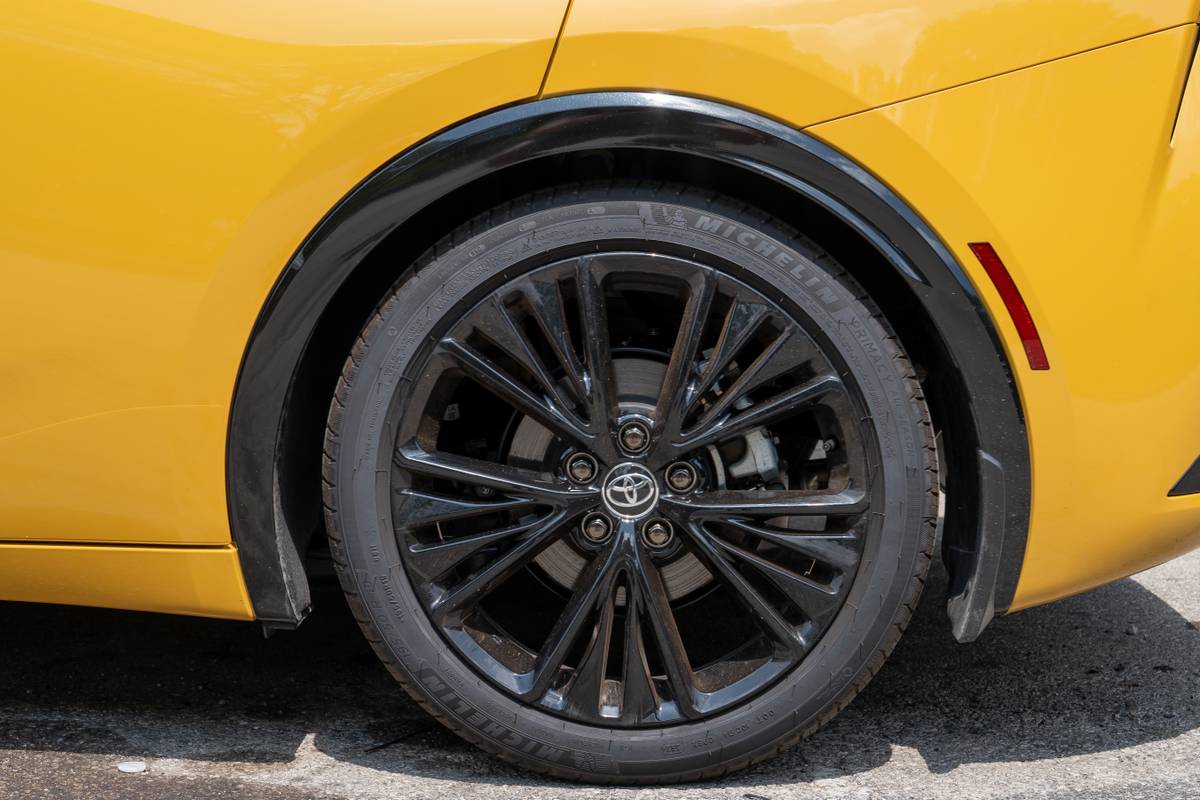
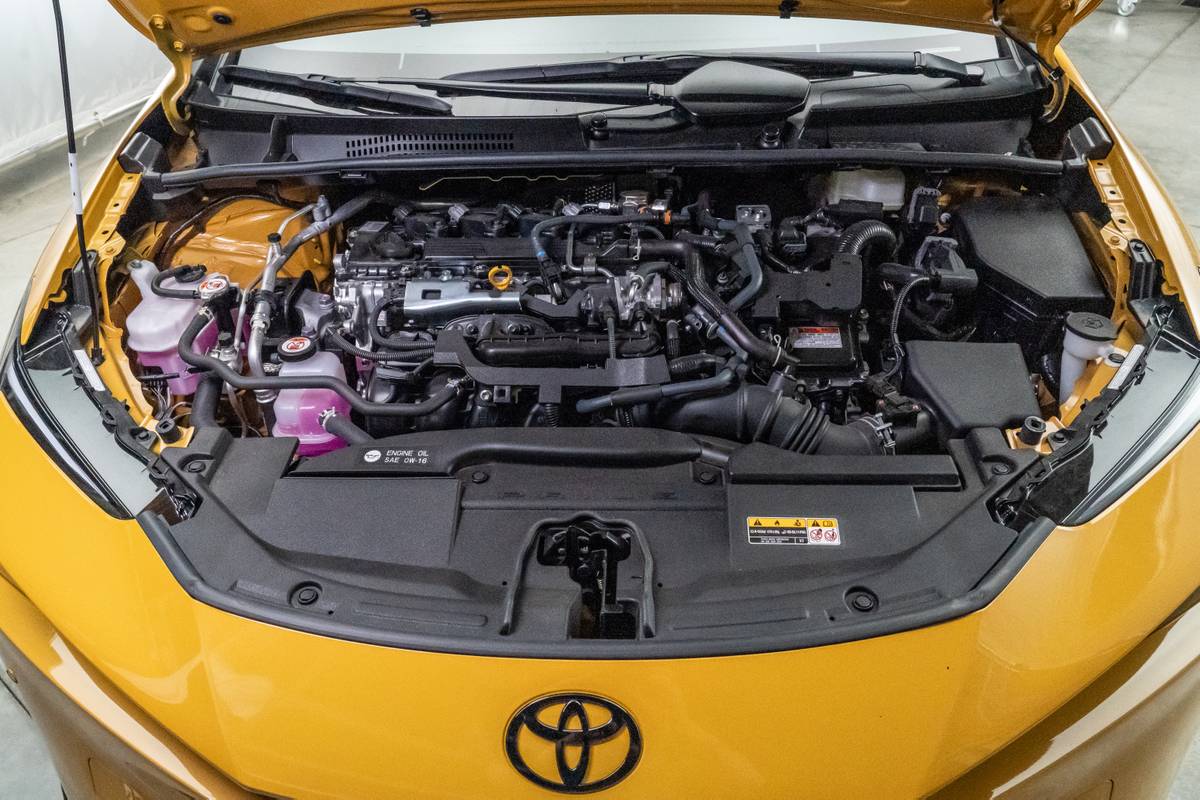
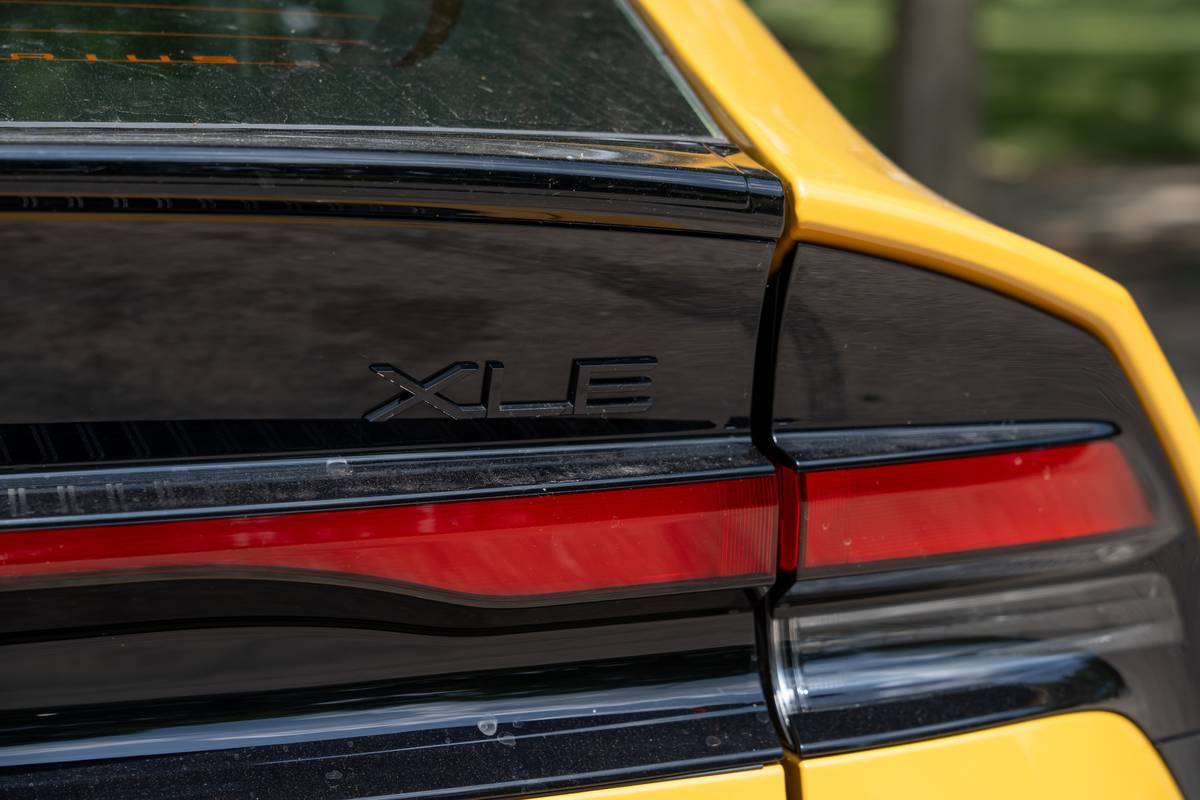
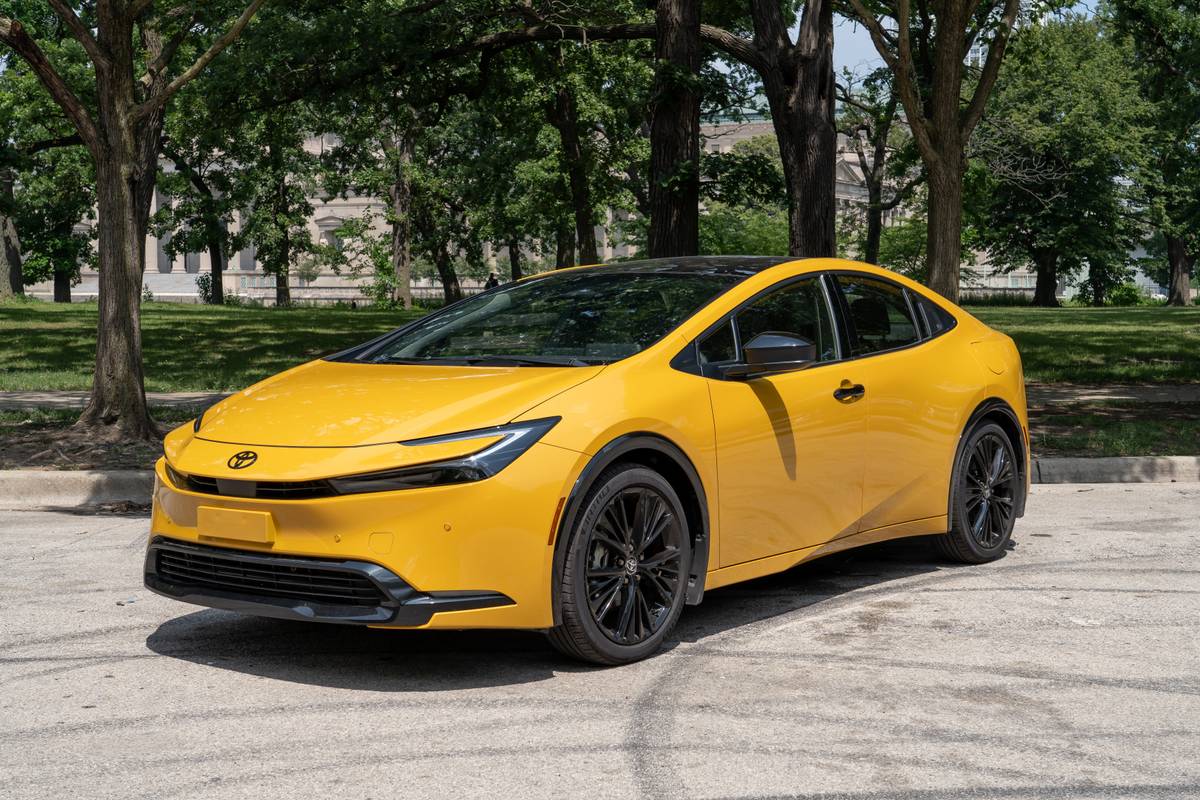
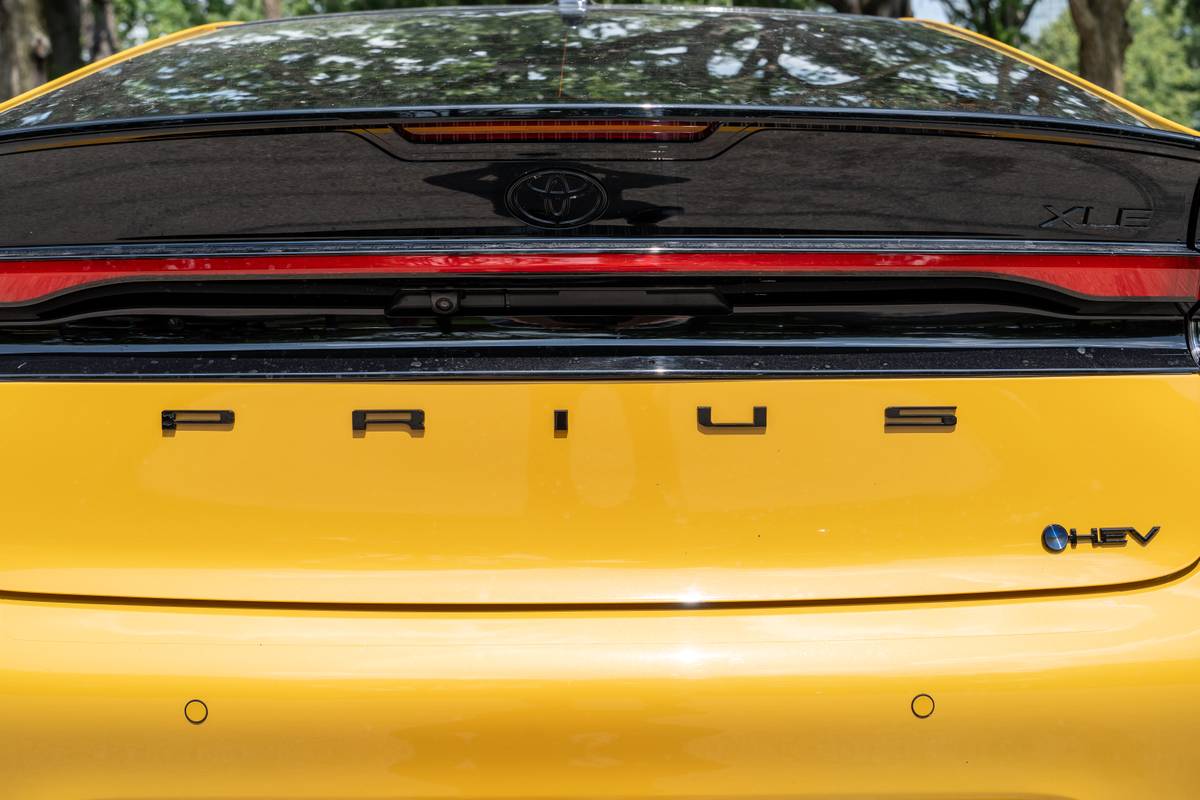










The Prius does a couple of things well, primarily fuel efficiency. The base, front-wheel-drive Prius earns an EPA-rated 57 mpg combined; all-wheel drive is available, but it knocks that rating down to 54 mpg combined. XLE and Limited trims are rated 52 mpg combined (49 mpg with AWD), but even those numbers are super competitive: In their base trims, the 2025 Honda Accord Hybrid is rated 48 mpg combined, the 2025 Hyundai Tucson Hybrid is rated 38 mpg combined, and the 2025 Toyota RAV4 Hybrid is rated 39 mpg combined. For those looking for even more efficiency, the Prius Plug-in Hybrid is rated up to 52 mpg combined, with 45 miles of electric-only range. It doesn’t, however, offer AWD. The regular Prius has an EV mode, but it didn’t get me far: I was able to drive on electric-only power for just a couple of blocks at very low speeds.
The Prius’ drama-free driving dynamics are another high point. While it’s always flown its hybrid flag when it comes to styling, it has a very “normal car” driving feel — in the best of ways.
Power comes from a 2.0-liter four-cylinder engine that’s coupled with an electric motor, good for a combined output of 194 horsepower with FWD (AWD versions get an additional electric motor for the rear wheels and make 196 hp). While I wouldn’t go so far as to call it fast or fun, the Prius has a lively quality to it. Acceleration from a stop is peppy, and it’s pretty maneuverable in around-town driving.
Drive modes add a bit more character or efficiency, depending on what you’re looking for: The Prius’ Sport mode makes for more aggressive acceleration, while Eco mode prioritizes fuel economy.
Overall, the Prius is very comfortable to drive, with suspension tuning that offers good bump absorption, natural-feeling steering and a well-integrated regenerative-braking system that lacks the odd lurchiness some other hybrids struggle with.
What Tech Does the 2025 Toyota Prius Have?
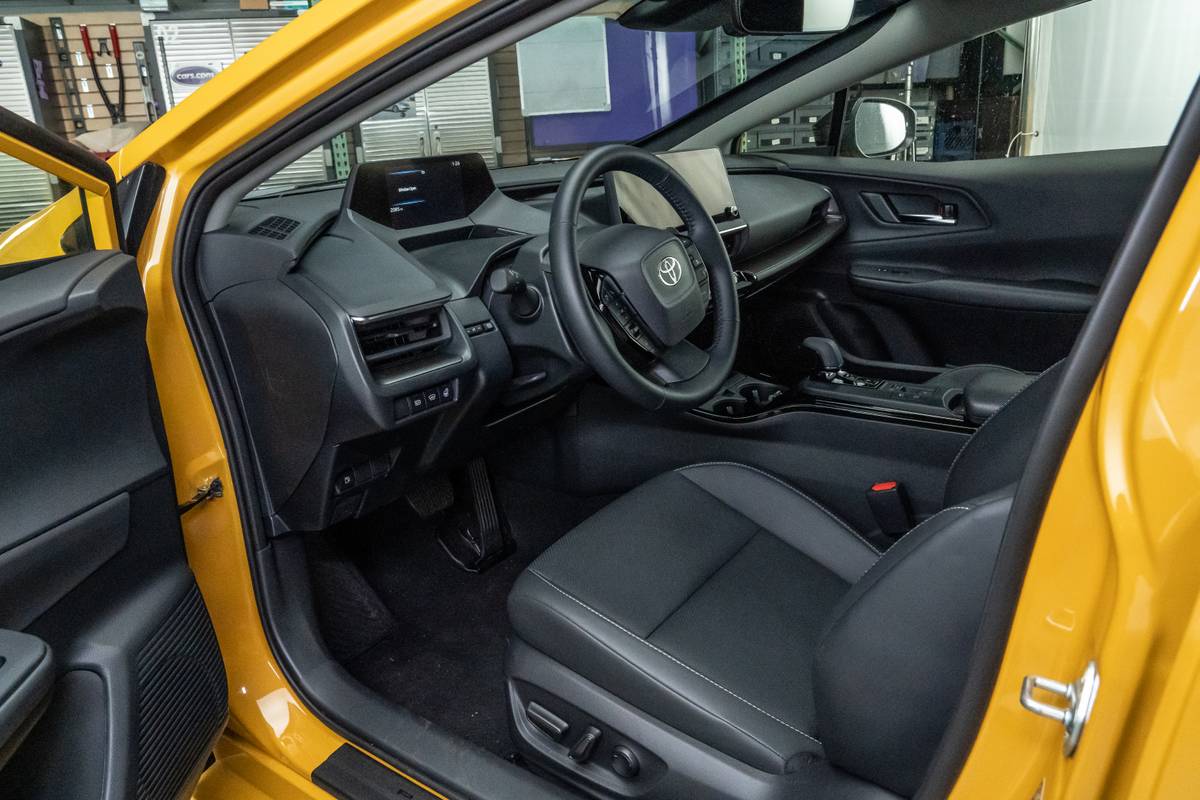

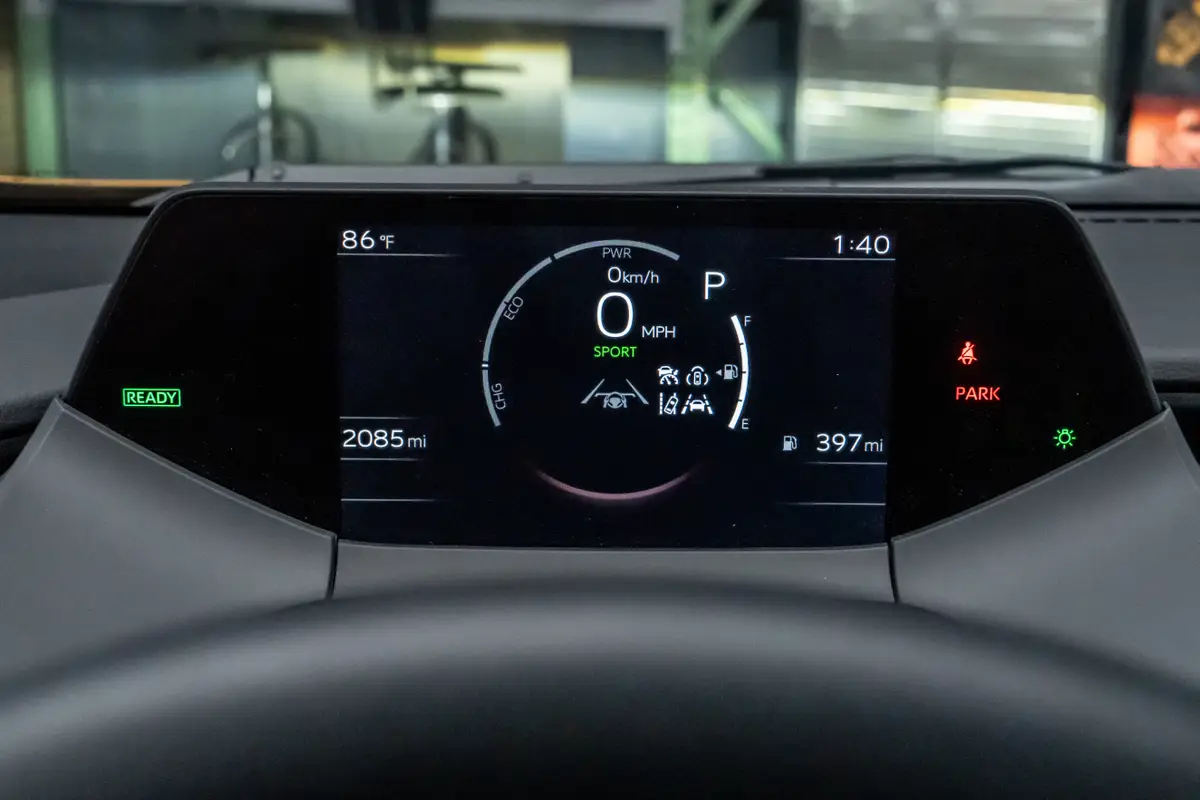
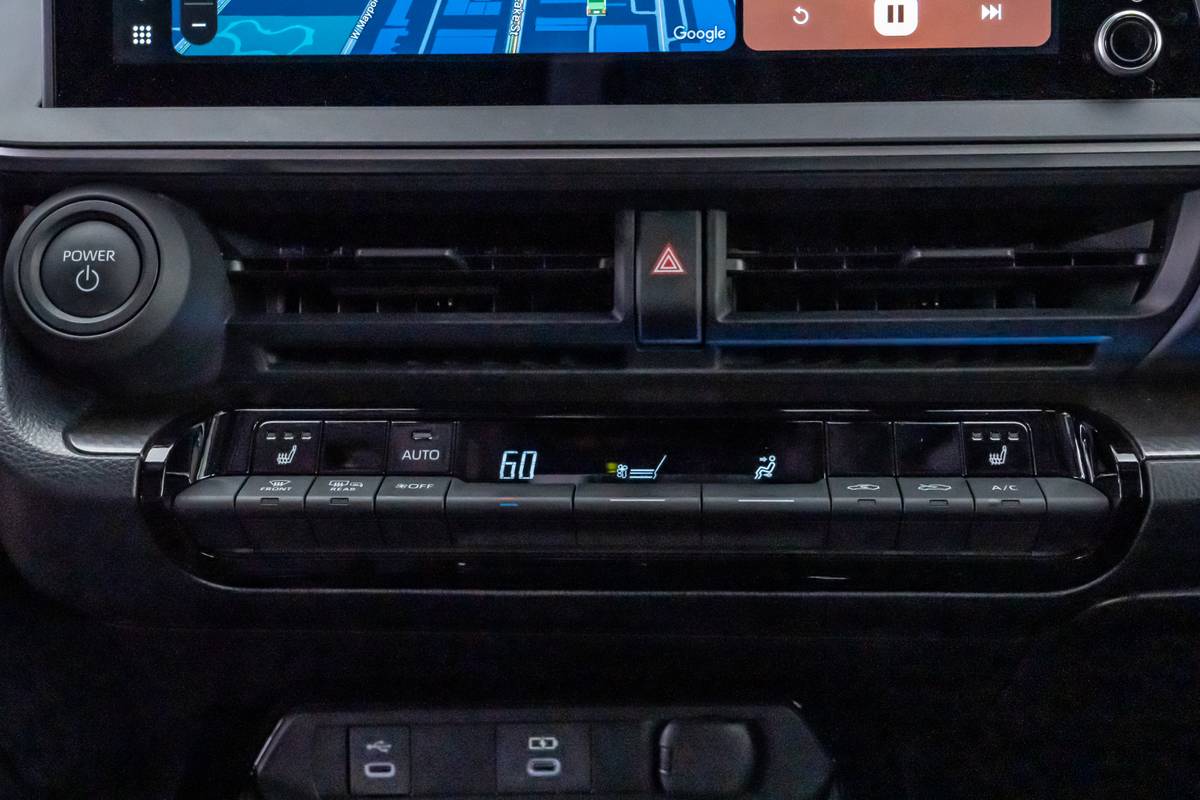
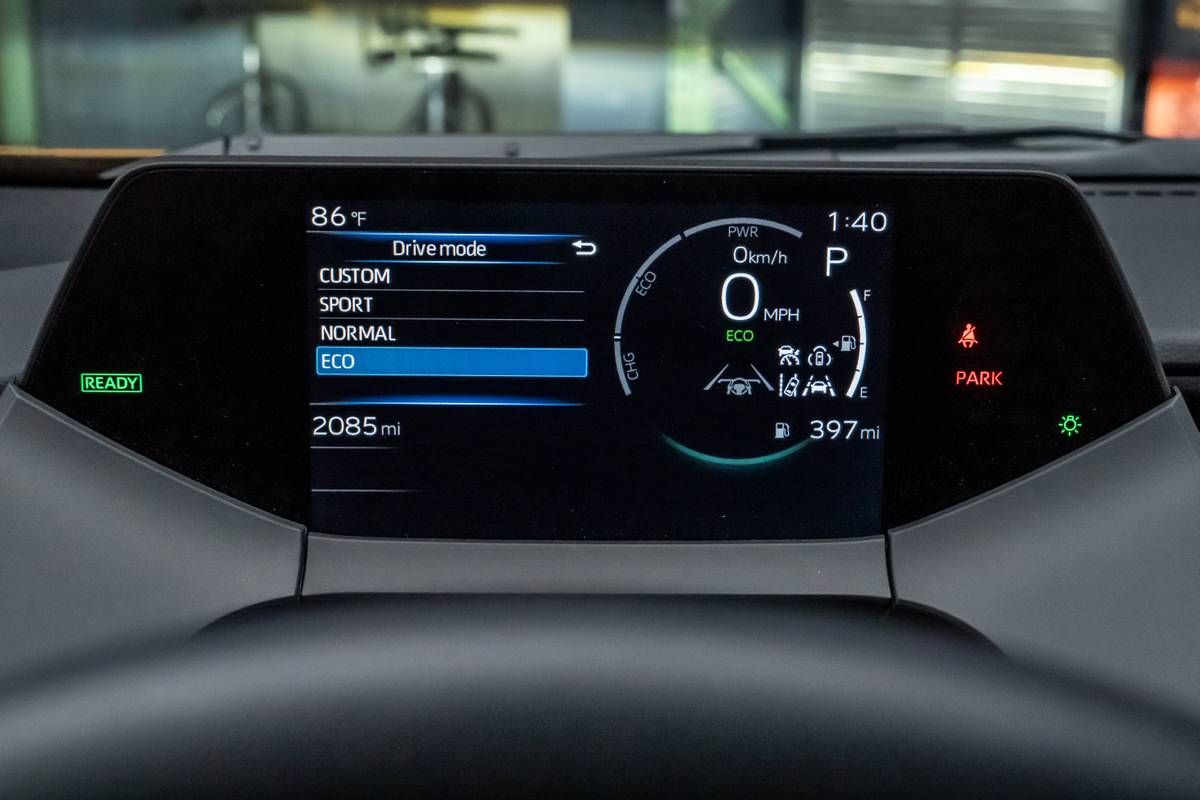
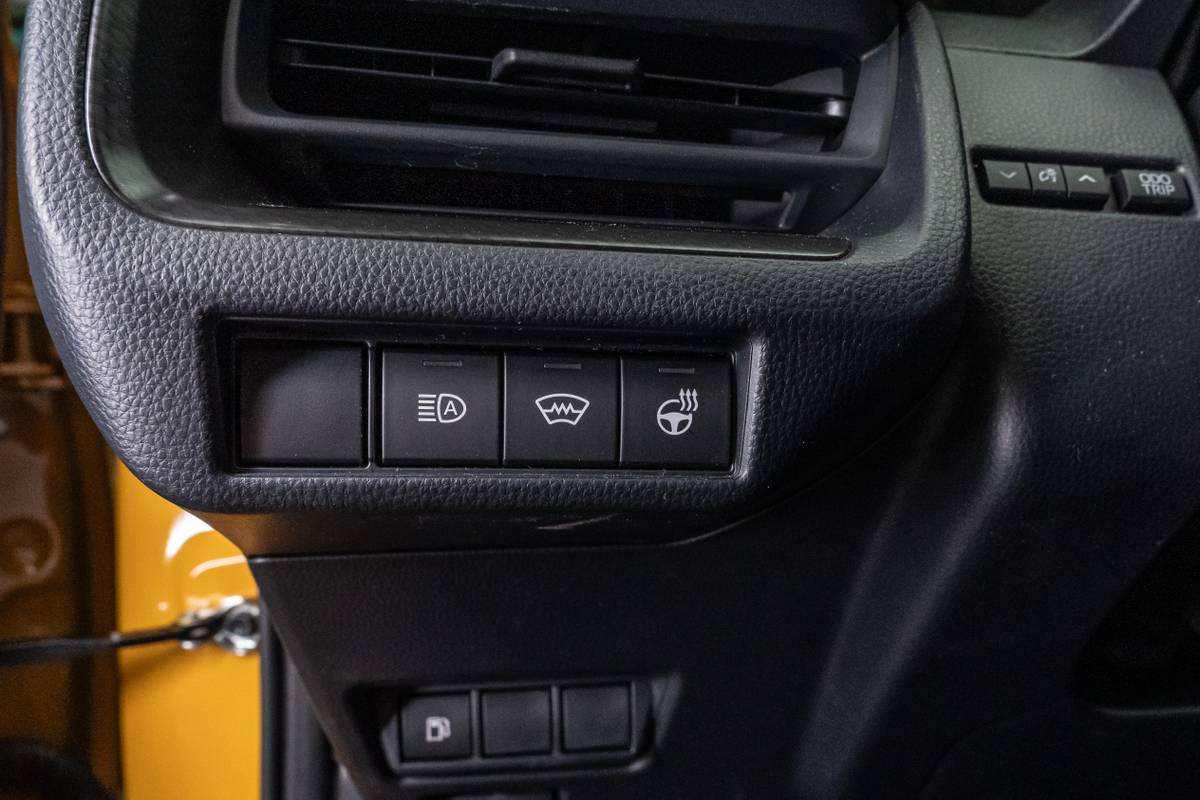
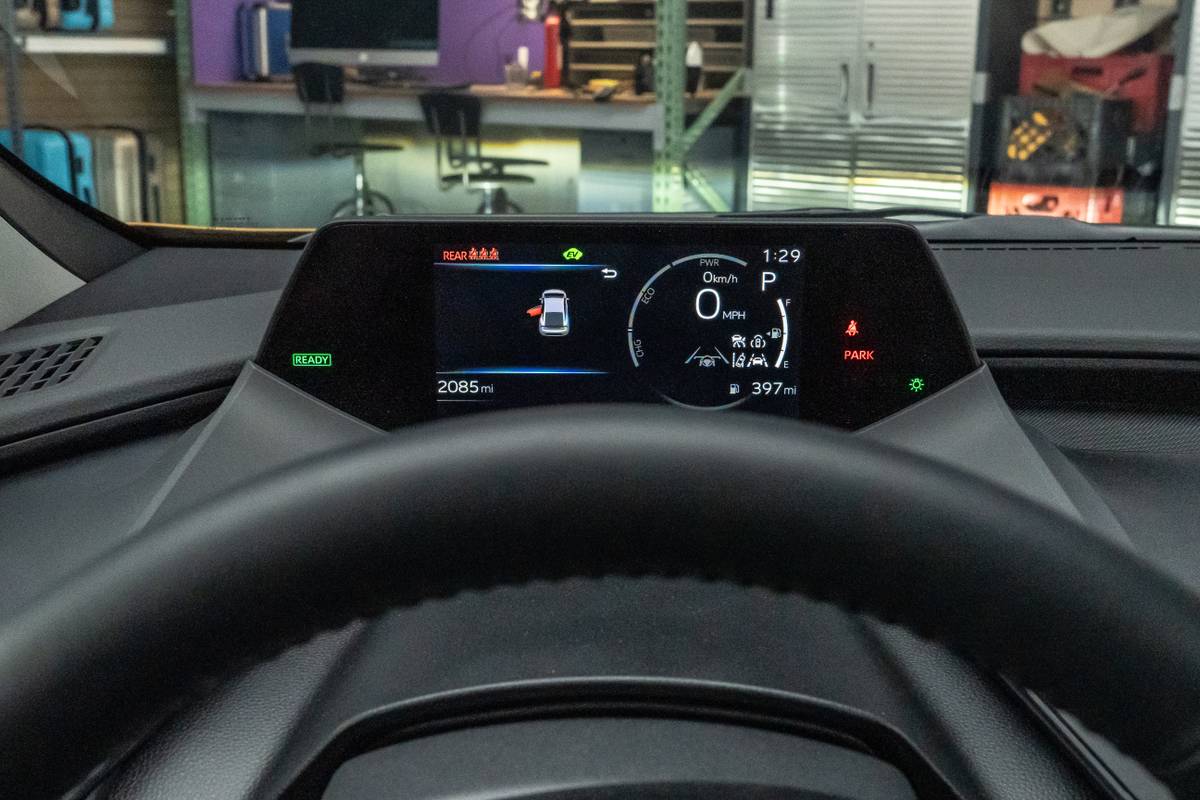
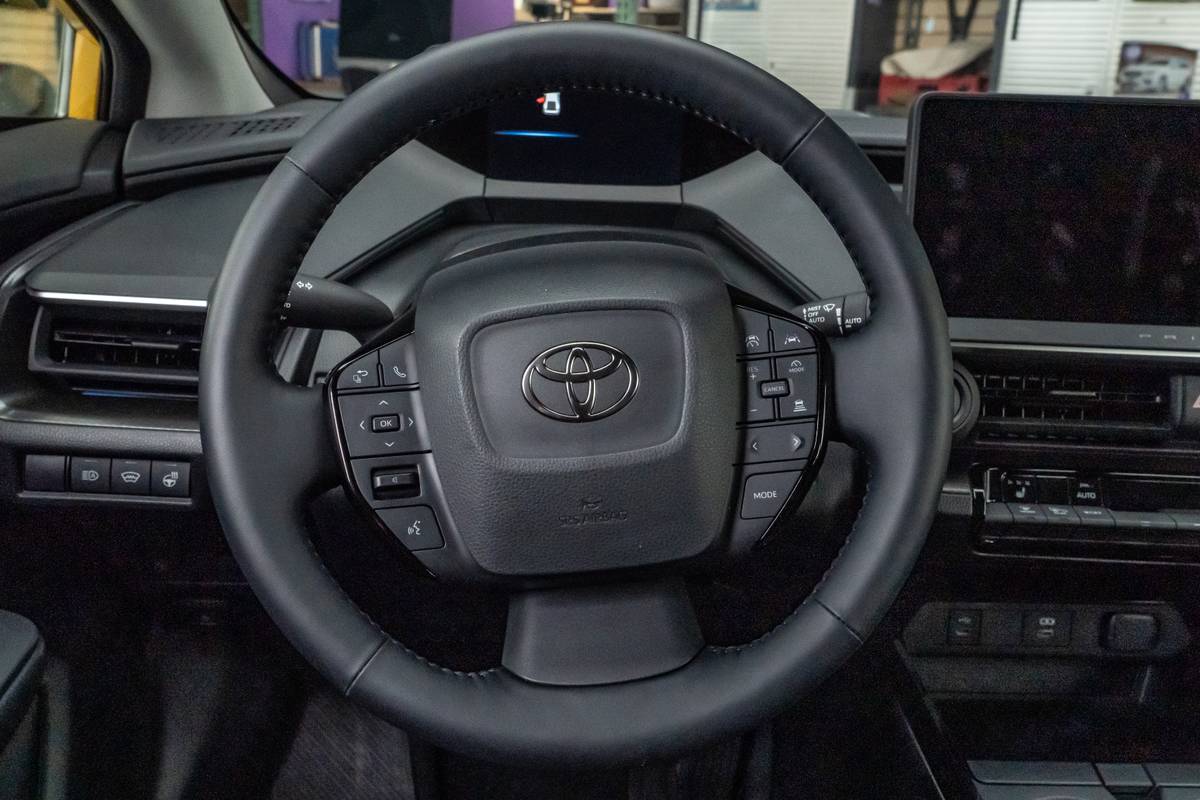
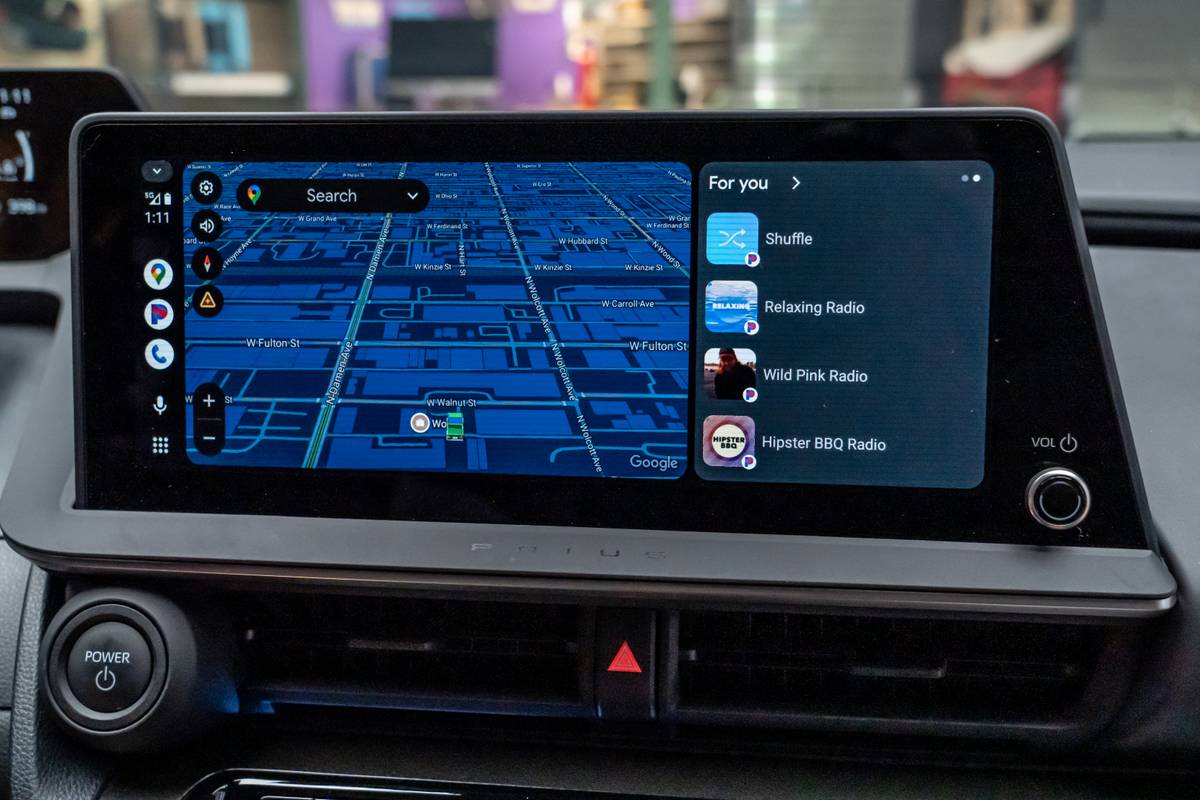

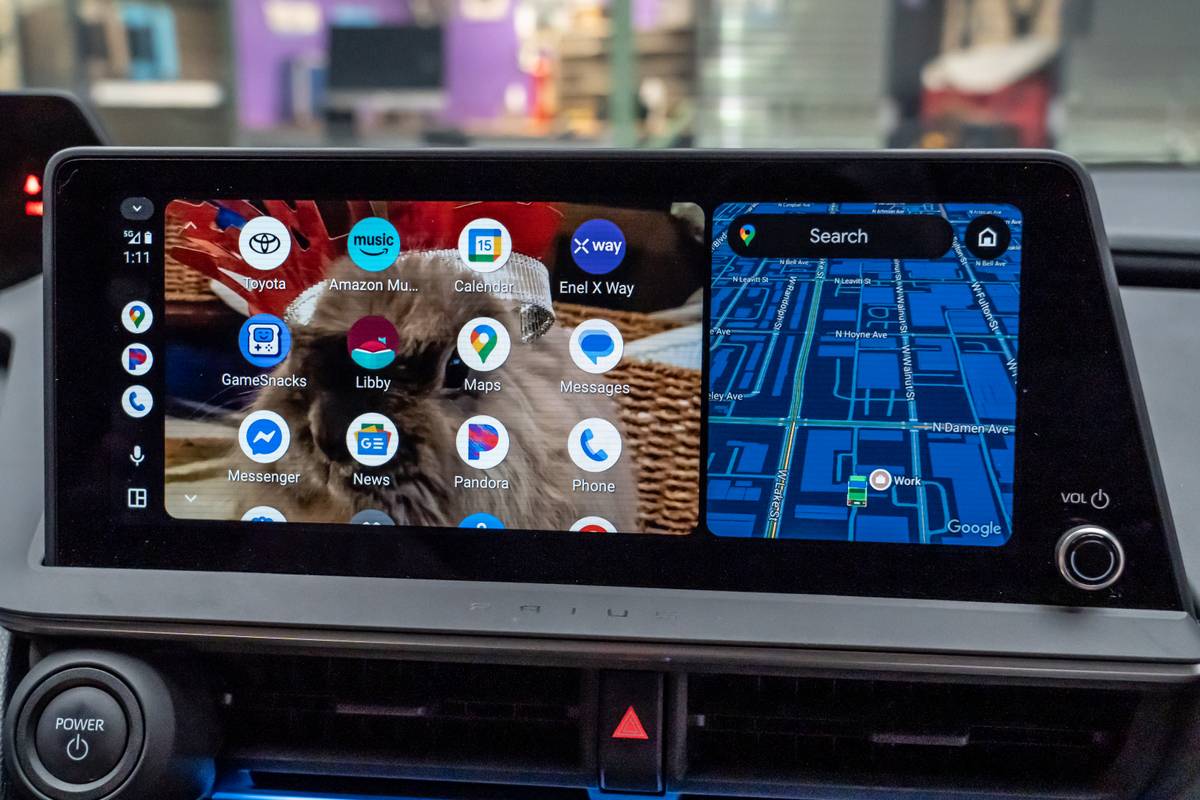
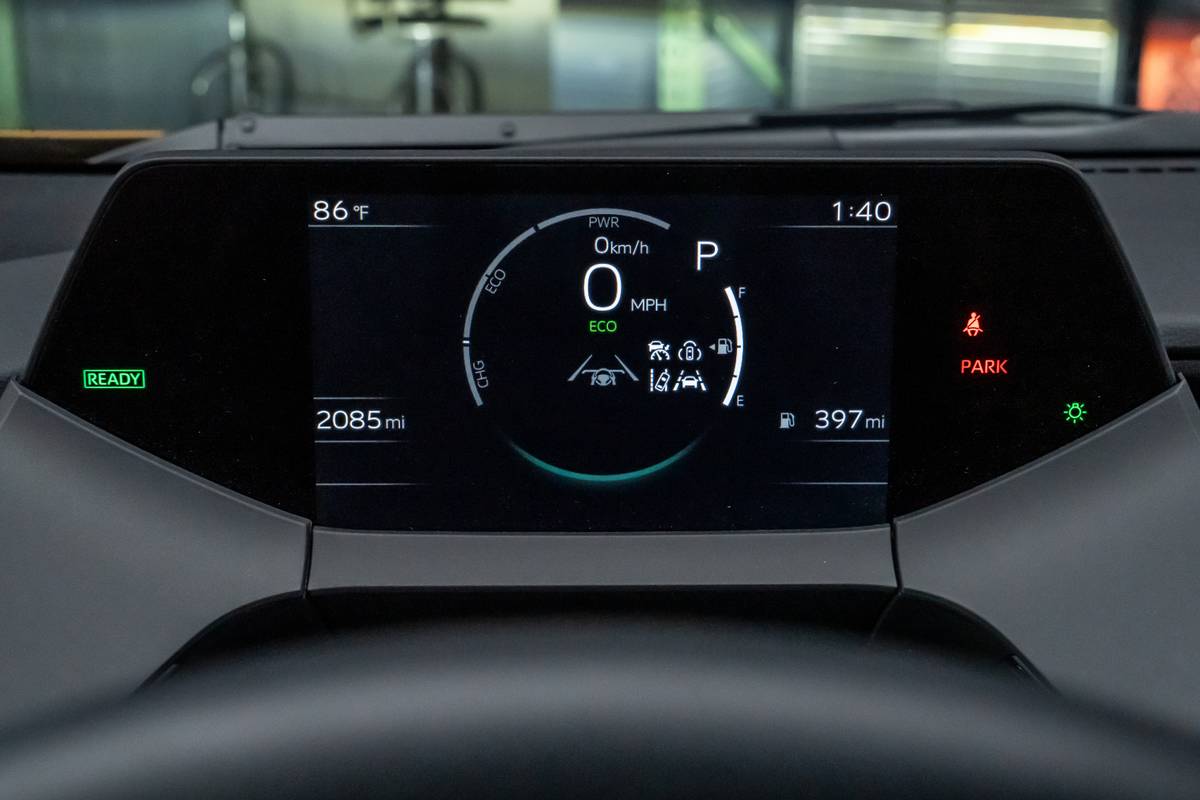












The Prius’ climate and infotainment controls have a straightforward design and are fairly intuitive to use. An 8-inch touchscreen multimedia system with wireless Apple CarPlay and Android Auto is standard; a larger 12.3-inch screen is optional. The larger screen on my Nightshade trim was easy to use and responsive, with near-seamless connection to wireless Android Auto every time I got in the car.
Wireless phone charging is standard on the Nightshade, which sits just below the top Limited trim in the lineup. Limited-only options include a 360-degree camera system and autonomous parking. My test car came with an optional integrated dashcam that can record emergencies like accidents, but at $375, it was expensive.
In other ways, including its materials and design, the Prius’ cabin is largely forgettable. The Nightshade trim at least adds some visual drama, with black SofTex imitation-leather seats with gray contrast stitching, along with carbon-fiber paneling on the dash.
- ${price_badge()}
- ${ami_badge()}
- ${battery_badge()}${ev_report_link()}
- ${hot_car_badge()}
- ${award_badge()}
- ${cpo_badge()}
${price_badge_description}
${ami_badge_description}
The EV Battery Rating is based on this vehicle's current expected range relative to the vehicles expected range when new. ${battery_badge_text}
This vehicle is certified pre-owned, backed by a manufacturer warranty, and typically undergoes a rigorous multi-point inspection to ensure quality and reliability.
This vehicle is currently in high demand given its competitive price, desirable features, and overall condition, and may have a higher chance of selling quickly.
Shop the 2025 Toyota Prius near you

What’s Wrong With the 2025 Toyota Prius?
My biggest issues with the Prius have to do with its shape. While the 2025 Prius is definitely a lot less nerdy-looking than the previous generation, its swoopy styling comes at the cost of practicality in terms of space and visibility. It looks cool but is a pain to live with, which will become apparent as soon as you attempt to get into it: It’s difficult to get in and out of the Prius due to its short stance and low roofline.
Once you make it inside, headroom is not generous in either row, especially in models with the optional glass roof. At 5-foot-6, I had enough headroom, but taller editors struggled — especially in the backseat due to the Prius’ sloping rear roofline.

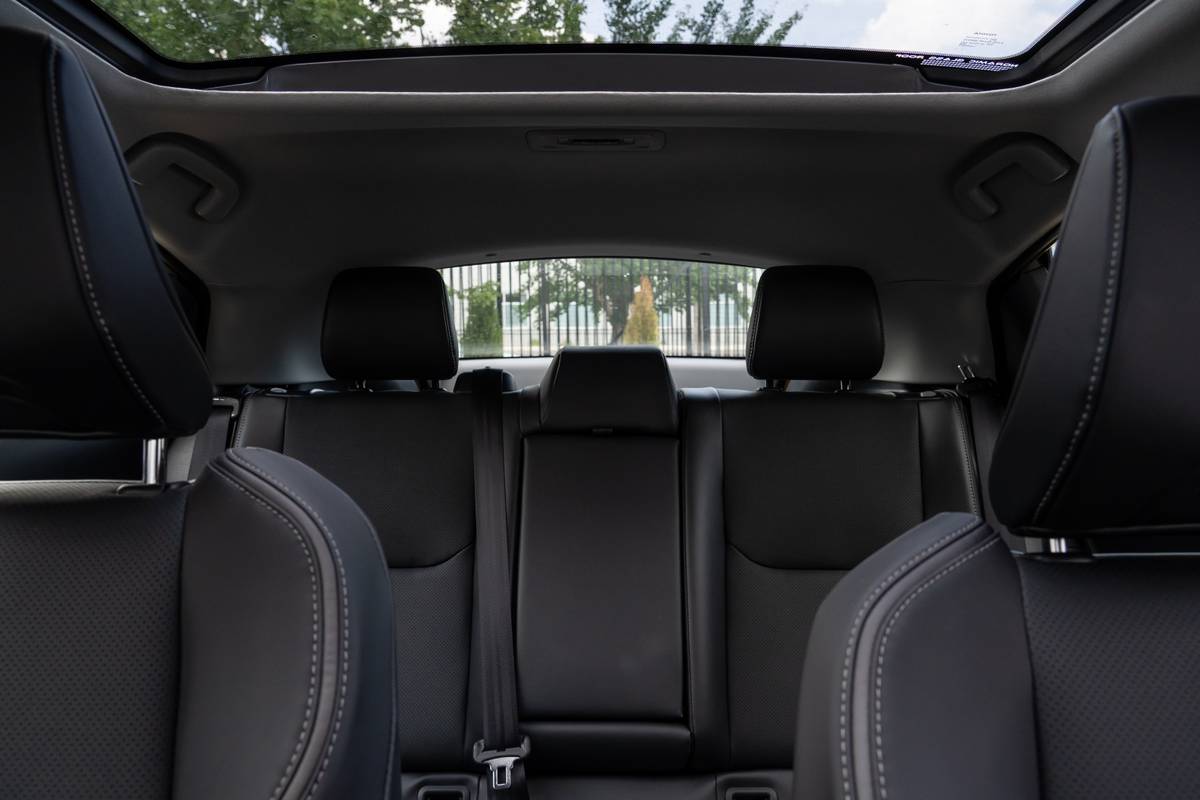
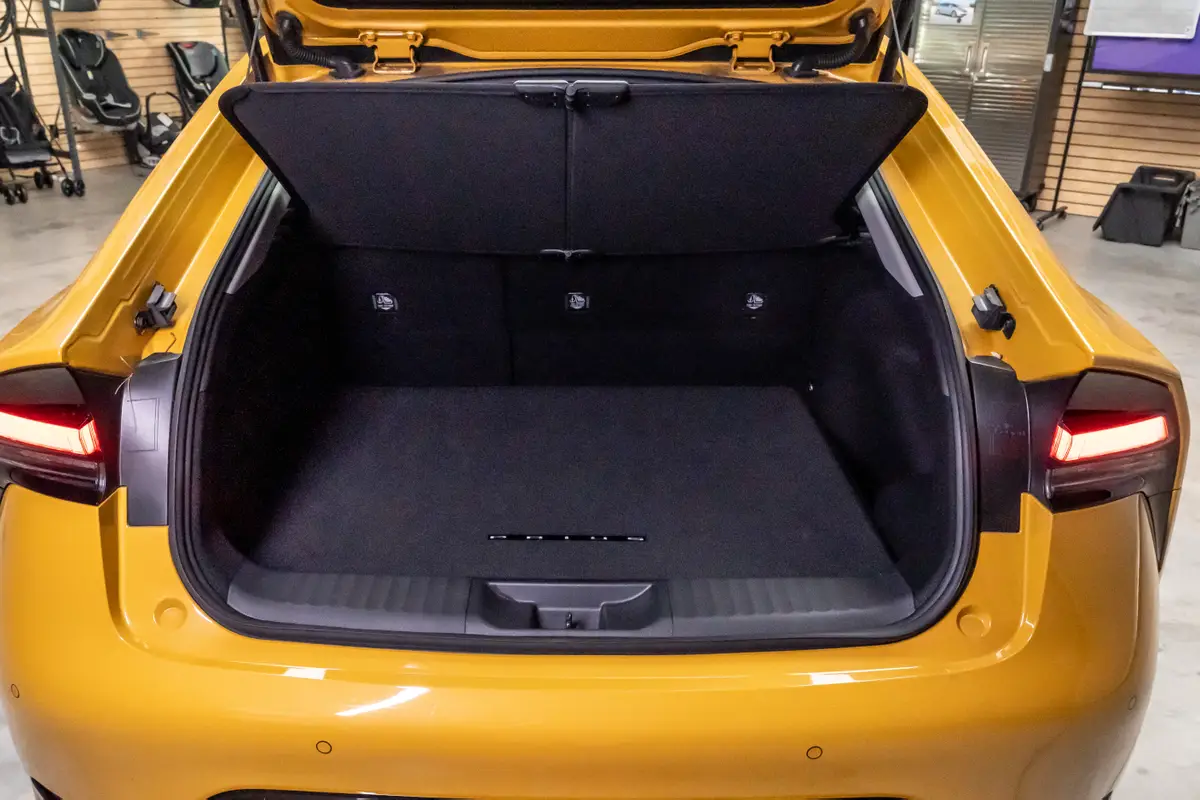
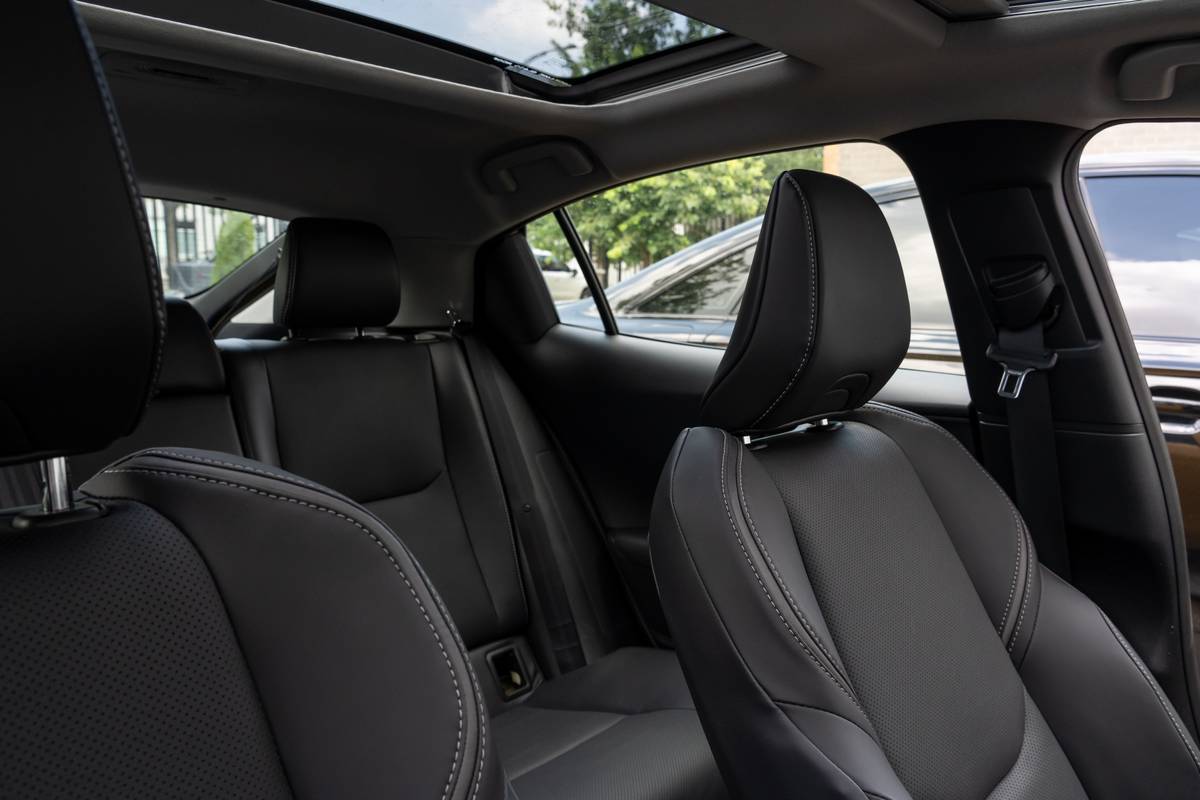
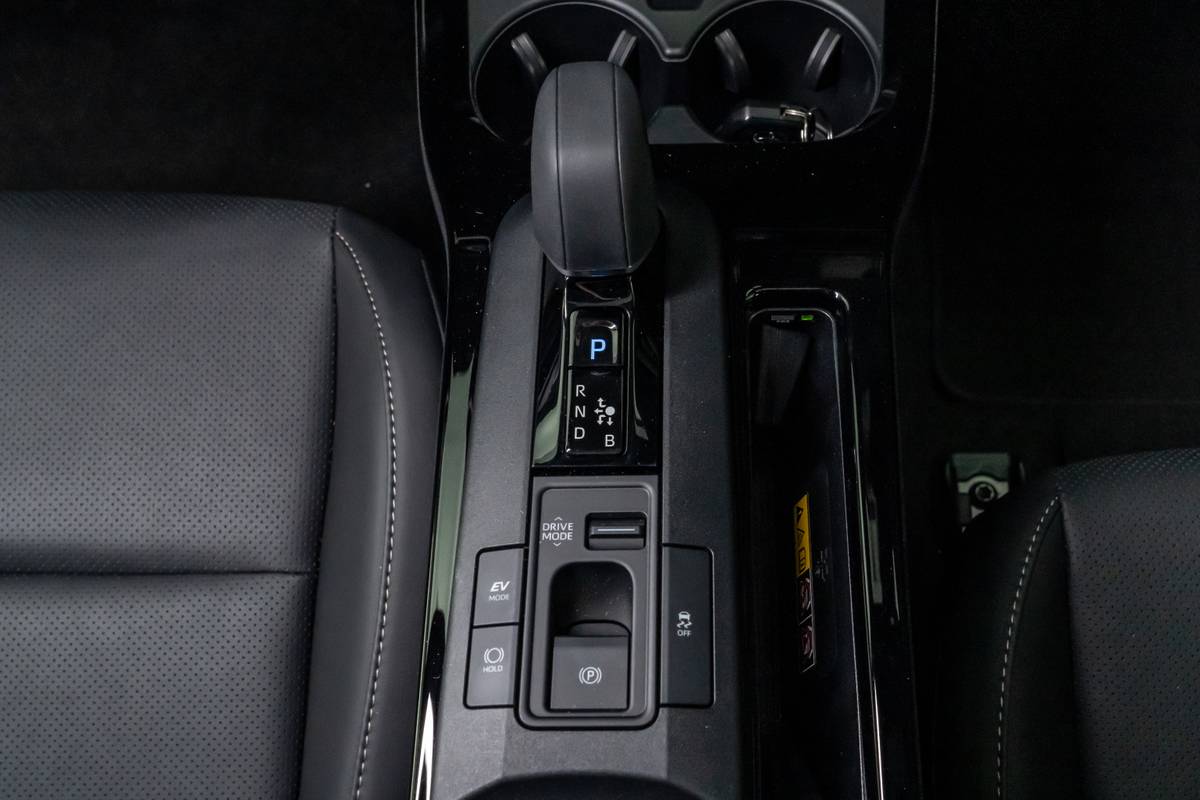
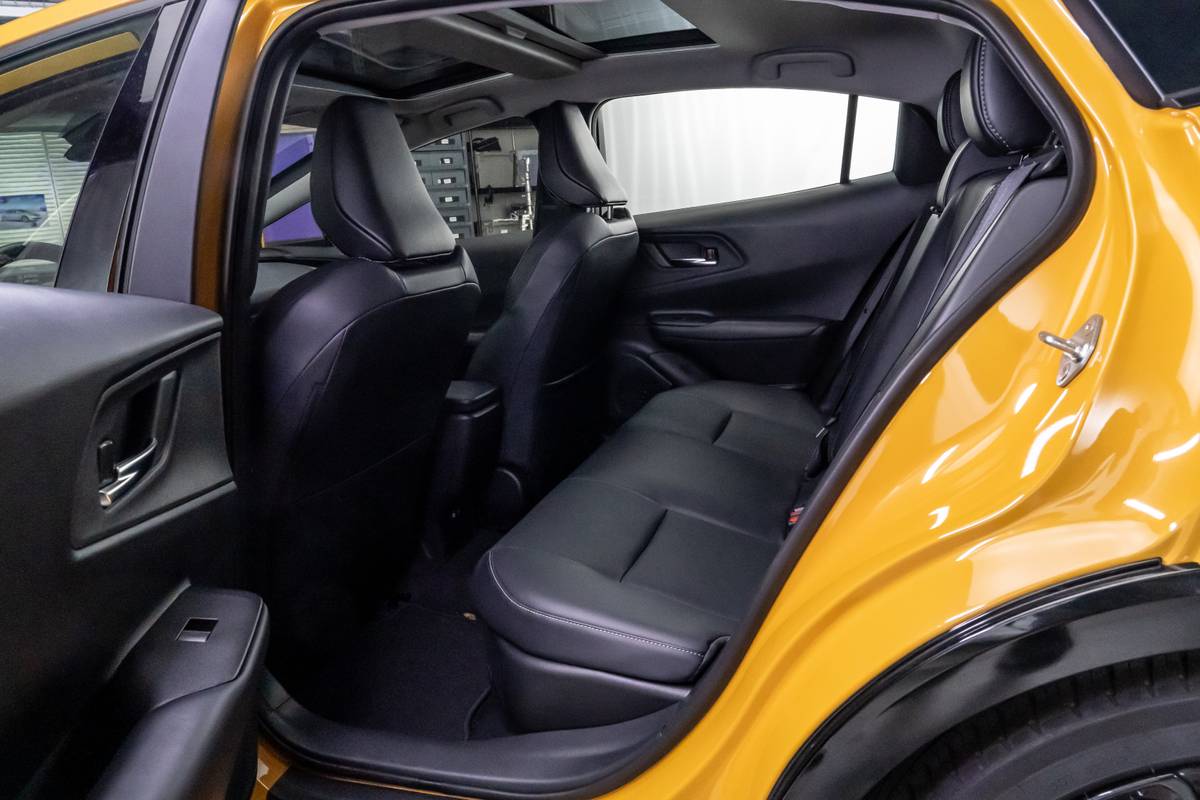
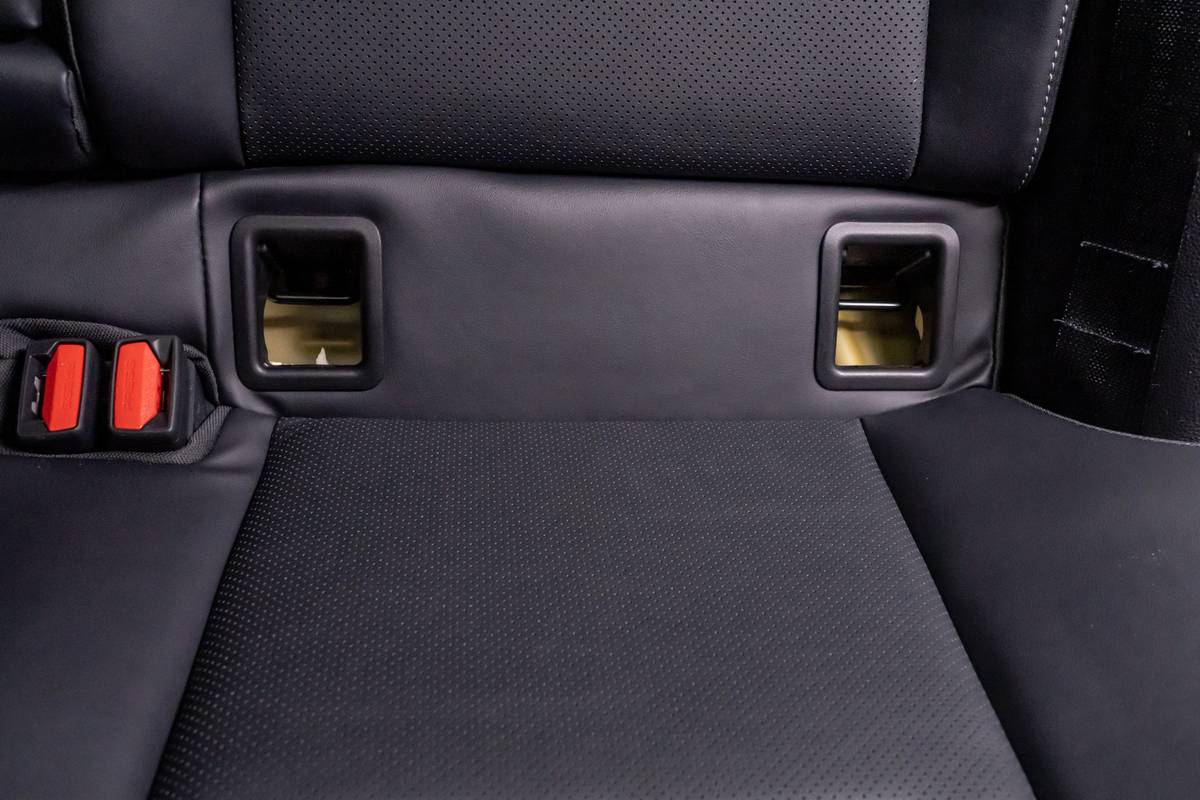
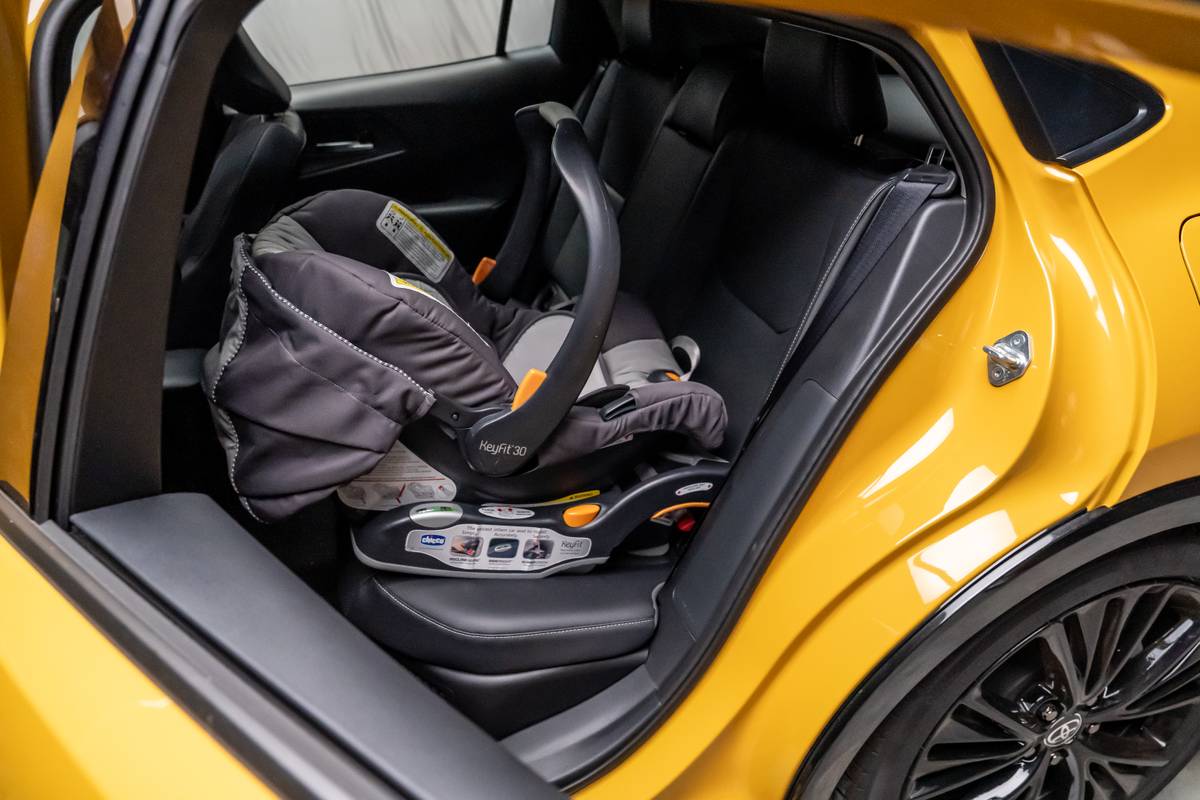
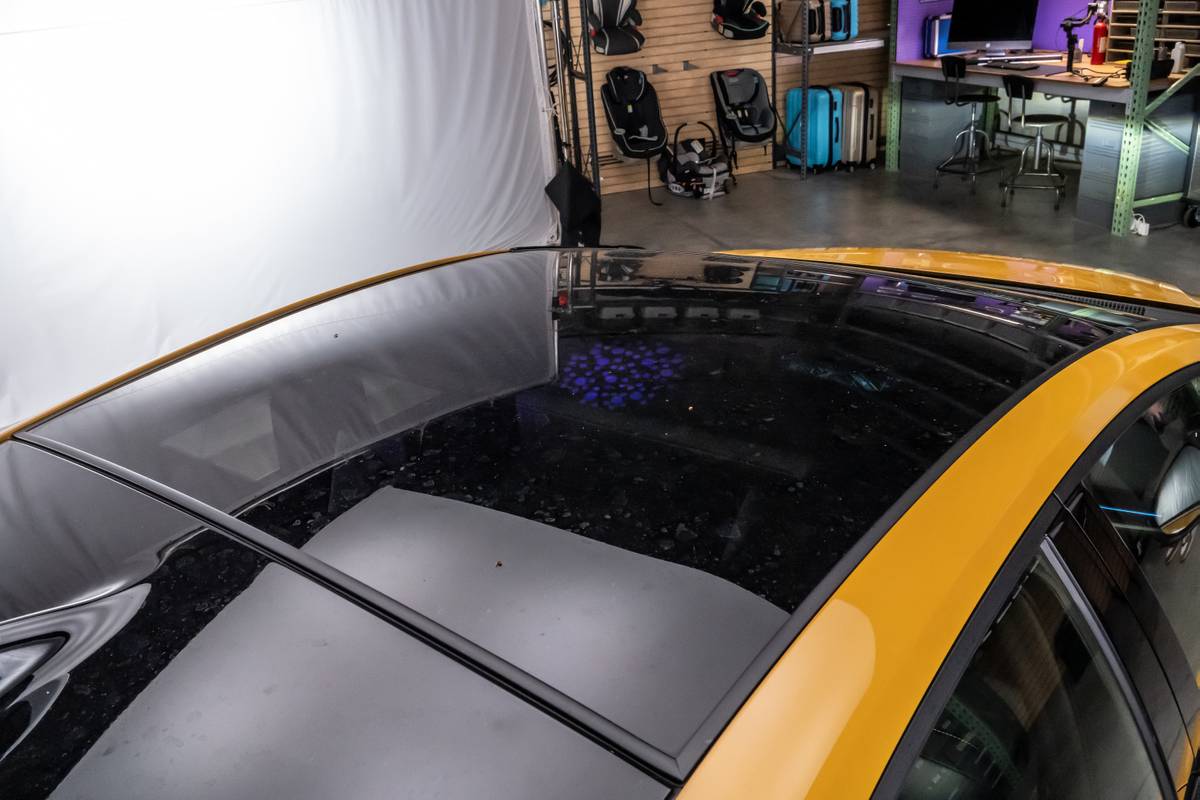
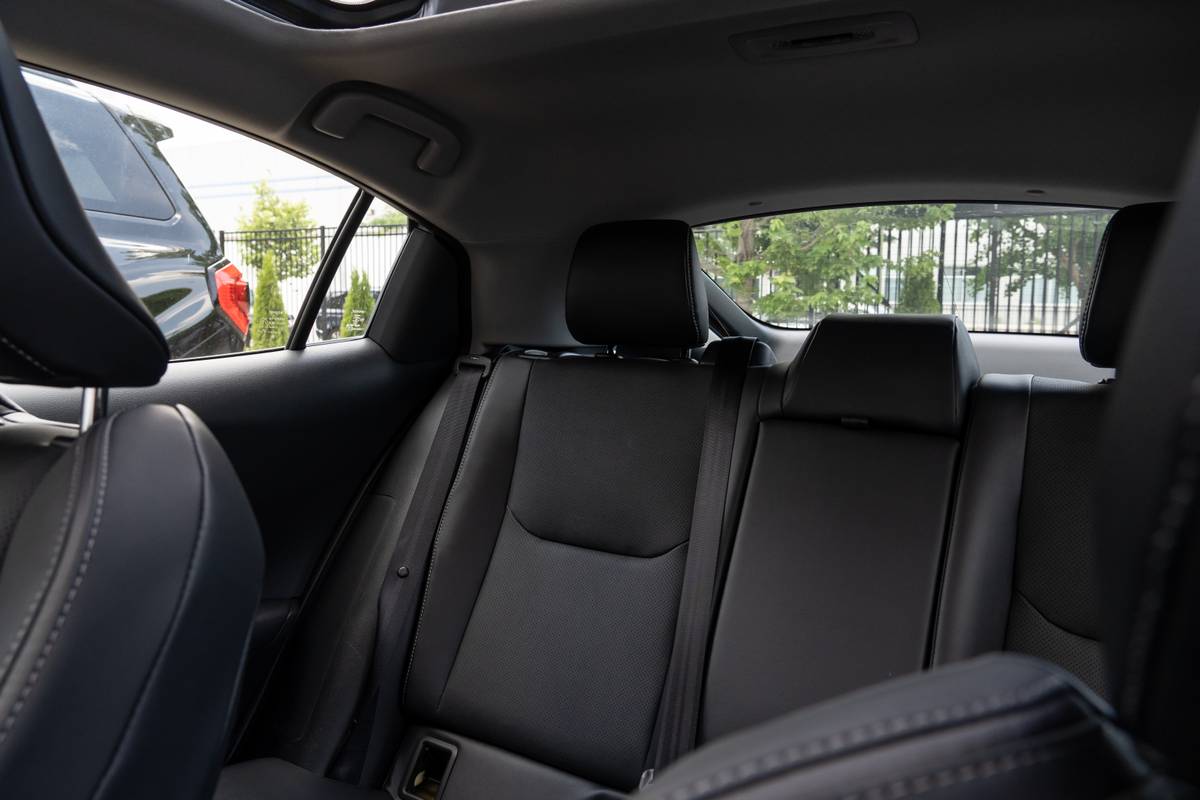
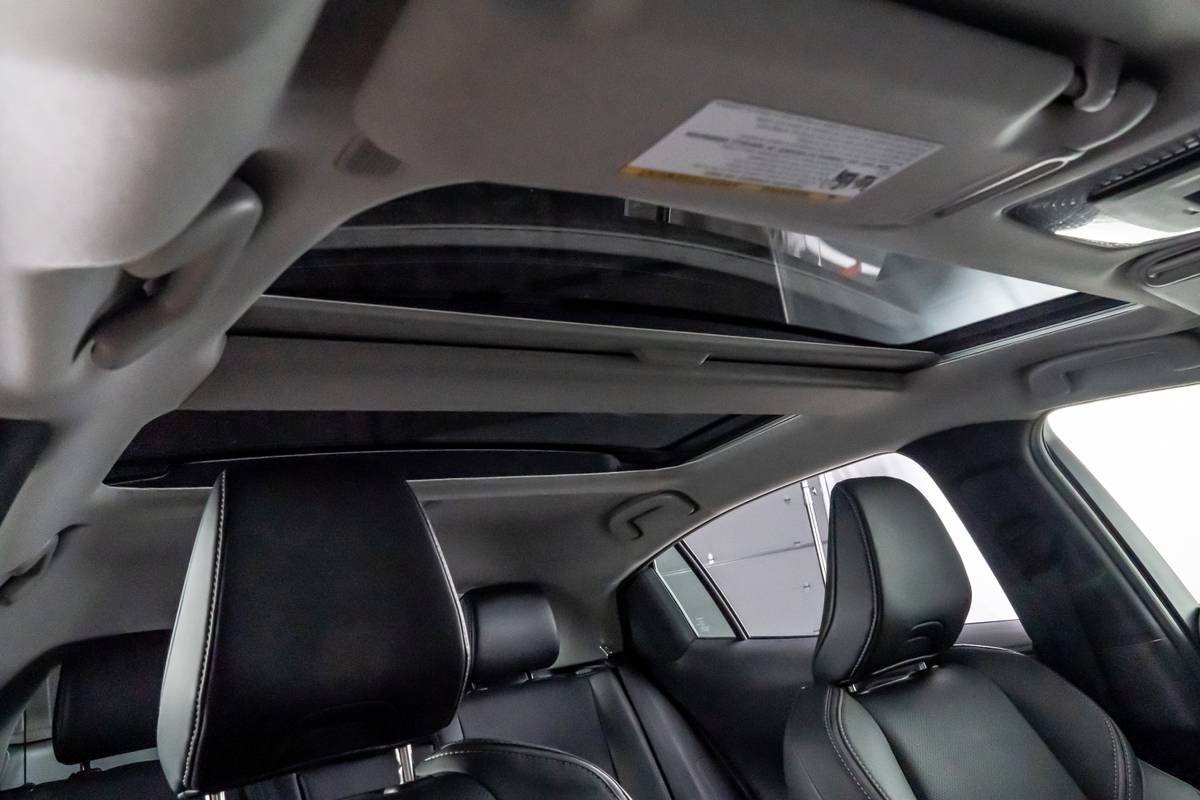











In our Car Seat Check, we installed two car seats with ease thanks to the Prius’ accessible lower anchors, but taller front passengers will feel cramped when a rear-facing car seat is installed behind them.
Visibility everywhere is another struggle. From the driver’s seat, it can be tough to see out of the Prius thanks to its super-low windshield, sloped rear end and small rear window. That said, this generation’s rear visibility is actually somewhat of an improvement over the outgoing model’s odd split-window design, but it’s still not great.
The placement of the gauge cluster also affected my view forward. It sits in a large panel mounted high on the dash; not only was the panel partially blocked by the steering wheel, it also impacted my already limited forward view.
Other ergonomic oddities that will impact your comfort include hidden exterior handles on the rear doors that are in an awkward, higher-up position, as well as a nontraditional gear selector that takes some getting used to.
More From Cars.com:
- What Are the Most Fuel-Efficient Cars?
- So You Want to Buy a Hybrid Car: 6 Things to Know
- How Do Car Seats Fit in a 2025 Toyota Prius?
- Blacked-Out Nightshade Edition Joins Toyota Prius Plug-in Hybrid Lineup for 2026
- Research the 2025 Toyota Prius
Is the 2025 Toyota Prius a Good Value?

Toyota’s hybrid hatchback has long been a standard bearer when it comes to fuel efficiency for the money; it routinely makes Cars.com’s annual Best Hybrids for the Money list. The 2025 Toyota Prius starts at $29,545, and the Nightshade Edition starts at $33,755; AWD adds $1,400 (all prices include destination). Its rivals, meanwhile, start higher: The Honda Accord Hybrid and Hyundai Tucson Hybrid both start around $35,000, while the Toyota RAV4 Hybrid starts around $34,000.
The Prius is also well equipped with safety features. Toyota Safety Sense 3.0 is standard on every Prius and includes forward collision warning with pedestrian detection, automatic emergency braking, adaptive cruise control, lane-centering steering assist, automatic high beams and road-sign recognition. Blind spot warning, rear cross-traffic alert and safe-exit assist are also standard.
Overall, the Prius is an excellent pick for value-minded hybrid shoppers so long as they’re ready to make some comfort and ergonomics trade-offs.
Related Video:
Cars.com’s Editorial department is your source for automotive news and reviews. In line with Cars.com’s long-standing ethics policy, editors and reviewers don’t accept gifts or free trips from automakers. The Editorial department is independent of Cars.com’s advertising, sales and sponsored content departments.

News Editor Jennifer Geiger joined the automotive industry in 2003, much to the delight of her Corvette-obsessed dad. Jennifer is an expert reviewer, certified car-seat technician and mom of three. She wears a lot of hats — many of them while driving a minivan.
Latest news
